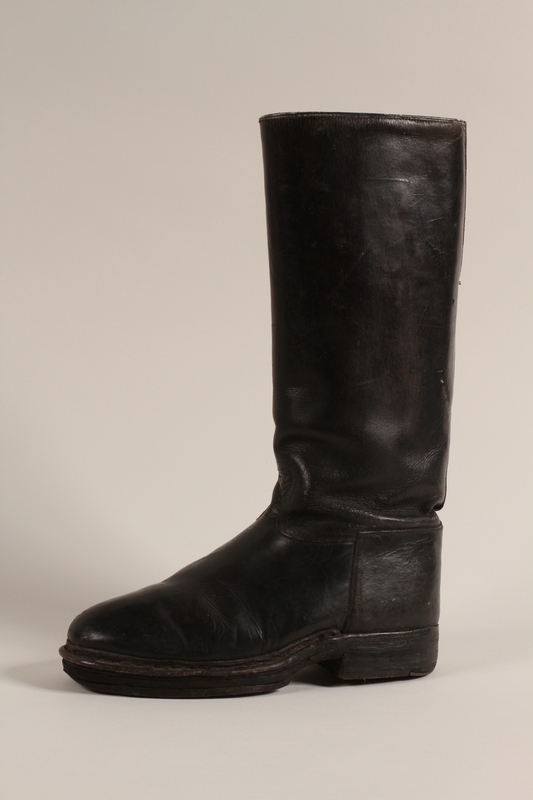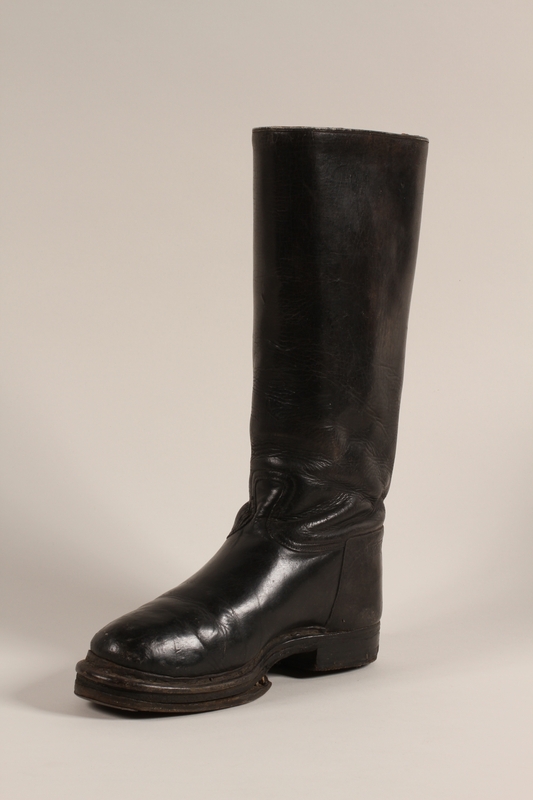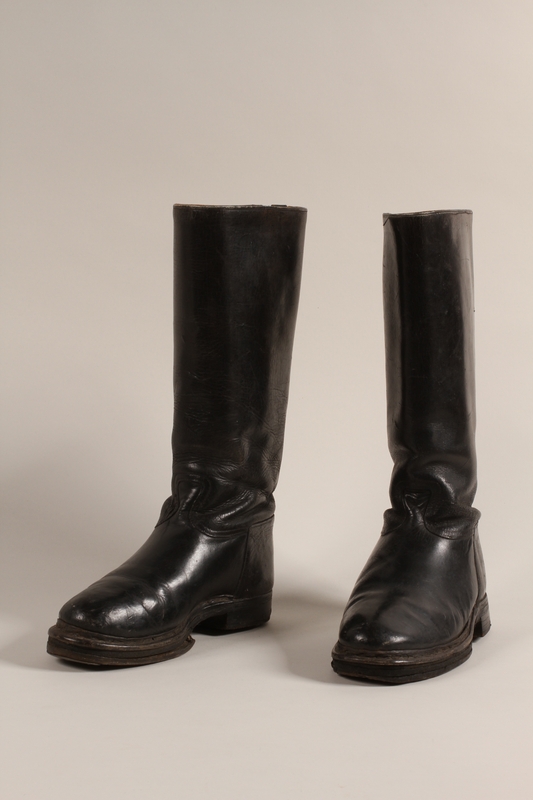Alice (Ala) Fass (b. 1920) was born in Nowy Sacz, Poland, to Kalman Josef and Kyla (née Greenfeder) Fass. Alice had two sisters, Esther (Estera, 1918-?) and Regina (1922-1995), and a brother, Samuel (?-1942). The family lived in Tarnów, Poland, which had a large, close-knit Jewish community. Kalman owned a hat factory with his father and two brothers. Kyla stayed home and took care of the children. They were a traditional Jewish family that kept kosher, and Alice and her siblings belonged to Zionistic organizations.
Alice had just returned home from vacation when Germany invaded Poland on September 1, 1939. Tarnów was occupied a week later by German forces which prompted many Jews to flee east, including the Fass’ neighbor. Samuel was supposed to go with him, but he chose to stay with his family. Kalman believed that the Germans would not target the Jewish population and it would be best if the family stayed in their home. However, after occupation, the Germans put ever-increasing restrictions on the Jewish population. Jews were forced to wear the Star of David, their bank accounts were frozen, businesses were taken away, and they were barred from many parts of the city. In the beginning of 1940, Jews in Tarnów were prohibited from moving away from the city.
By February 1942, an open ghetto had been established in the city and all Jews were forced to move inside. Alice was able to exchange her family’s nice apartment outside of the ghetto for an apartment in the ghetto, and her family moved in. During this time, the authorities registered all the Jews in Tarnów. They distinguished those who worked from those who did not work, primarily the old and the very young, with stamped identification cards. In June, the authorities commenced an aktion and rounded up Jews whose identification cards did not have worker stamps. Alice’s parents were among those taken. Kalman protested the harsh treatment of Kyla as they were being taken away, and in response, the Germans took him to the market place and executed him. Kyla was then transported to Belzec extermination camp, where she was later killed. On June 19, a wall was constructed around the ghetto and Jews were prohibited from leaving. Food was scarce, so Alice and her sisters would remove their Star of David armbands, sneak out of the ghetto and smuggle goods inside. On September 11, the authorities staged another aktion. This time Alice’s brother Samuel was deported.
While living in the ghetto, Alice began dating Samuel Brand, a former chemistry student at the Jaggielonian University in Krakow. After they had been dating for a while, Samuel learned of a program that exchanged Jews with Allied visas for German Prisoners of War (POWs). Before the war, when he was still a student, Samuel was accepted to Columbia Medical School in the United States but he was unable to go. However, he still had his American visa that made him eligible for exchange. Samuel and Alice decided to get married, with the hope that as Samuel’s wife, Alice would be exchanged as well. They were married on May 23, 1943. During the ceremony, Alice and Samuel could hear the Germans shooting Jews downstairs in the lobby.
Before they could register for exchange, Samuel and Alice learned the program was a fruitless endeavor and the Germans had killed many of the Jews that tried to be exchanged. After they heard about the fate of the other Jews in the exchange program, Alice and Samuel registered themselves as unmarried, and Alice used her maiden name. In September 1943, the authorities liquidated the ghetto. It was surrounded with soldiers, the Jews were ordered to assemble in the square and were sorted into two groups by Amon Göth, Commandant of the Płaszów labor camp. Samuel, Regina, and Esther were all sorted into one group, scheduled to go to Płaszów, where they would be put to work. Alice was initially put in the other group (likely destined for Auschwitz), but Regina told Göth that Alice was a seamstress, which allowed her to go to Płaszów.
In Płaszów, Alice received prisoner number 2628 and she worked at night sewing and repairing German uniforms with Regina, Esther, and Samuel. Alice’s sisters only worked there for a short time before they were taken away. Alice and Samuel had to walk far to work in the cold, and consequently they were sick often. The night shift was minimally supervised, which allowed Alice to discreetly use an oven originally purposed to keep clothing irons warm to cook smuggled food both to eat and sell. While in Płaszów, Samuel heard that the Germans were looking for prisoners with science backgrounds for special work. He applied and was accepted because of his chemistry schooling before the war. Alice also applied even though she did not have a science background. She lied on the application, and said she went to a university and worked at a cosmetics factory. Samuel then coached her and she was accepted as well. In the unit, Samuel did botany work with tomatoes and also completed Alice’s work. They worked in special barracks under somewhat more humane conditions than the rest of the camp.
In the fall of 1944, the authorities instructed the science unit to research a weapon that would produce rays that could ignite and destroy airborne enemy planes. In September, Alice and Samuel were deported with the unit to Flossenbürg concentration camp in Germany. When they arrived, Alice received prisoner number 52918. The men and women were separated, and the women were sent to Ravensbrück concentration camp. Alice worked in the Seimen’s plant soldering wheels in airplane compasses by day, and at night she slept on a sack filled with straw. Food was scarce in the camp, making Alice sick again. She was sent to the camp hospital to recover and remained there until December. During this time, the men had been sent back to Płaszów and they convinced the Germans that the women’s presence would be beneficial to their work. Not long after Alice left the hospital, she and the other women were sent back to Płaszów to rejoin the men. Back in Płaszów, Alice worked in a drug store which allowed her to smuggle more supplies.
In January, 1945, with the Soviet army approaching, the prisoners in Płaszów were evacuated. Alice and Samuel were force marched to Auschwitz in German-occupied Poland. The men and women were separated upon arrival, but Alice and Samuel managed to meet at the fence. It was there that they each agreed to send a letter to Samuel’s aunt in the United States, if they survived the war. From Auschwitz, they were marched to the Gleiwitz sub camp. There, Alice was put on a cattle car and deported to Bergen-Belsen concentration camp in Germany. In Bergen-Belson, Alice only received a small portion of coffee with a little piece of bread in the morning, and a small cup of soup and a piece of bread at night. Alice contracted typhus, and weighed 70 pounds when the camp was liberated by British troops on April 15, 1945.
After liberation, Alice was admitted to a hospital and then taken to Sweden by the Swedish Red Cross for further recovery. After she recuperated, Alice wrote a letter to Samuel’s aunt, as they had agreed in Auschwitz. She received Alice’s letter and one from Samuel as well, and forwarded them each to other. Knowing that Alice was alive, Samuel went to Sweden to reunite with her. They lived in Sweden for three years, until they were able to immigrate to the United States on December 6, 1948 on board the Queen Elizabeth. They arrived in New York and eventually settled in San Diego, California. Both of Alice’s sisters, Regina and Esther also survived the war.
Samuel Brand (1914-2011) was born in Tarnów, Austria Hungary to Abraham and Sara Brand. Samuel had a younger sister, Dorothy (1915-?) who was married to Henry Weiss. Sara was a housewife and Abraham was a bookkeeper for an intercontinental steel company before he was drafted into the Austrian Army during World War I. After the war, he worked in men’s shirt manufacturing. The family were conservative Jews and not very religious. During the depression in the 1930s, the family struggled financially along with the rest of Poland, and sometimes they could not afford to heat their apartment in the winter. Samuel attended grade school and gymnasium, and then attended Jagiellonian University in Krakow. He wanted to be a pharmacist, but Jews were prohibited from that profession so he studied chemistry. After graduation, Samuel was accepted into Columbia medical school in New York, but he was unable to attend. As a result, Samuel continued his studies in Poland and was close to completing his master’s degree in 1939.
In September 1939, in accordance with the Molotov Ribbentrop Pact, Germany, and then Russia invaded Poland. In response, Britain and France declared war on Germany. On September 7, Tarnów was occupied by German forces. After the occupation, many Jews, including Samuel, began to flee to the east. He arrived in Lvov just before the Soviet army occupied the city. Samuel stayed there with his brother-in-law Henry, and other extended family. While there, Samuel studied chemistry in the city’s Polytechnic school for a year, until he ran out of tuition funds. He then acquired a job at a cosmetics factory. On June 22, 1941, Germany invaded the Soviet Union and occupied Lvov. Samuel continued working at the cosmetics factory until December, when Henry and his father decided to go back to Tarnów. They rented a truck, and Samuel, Henry, and his father drove through the snow to Tarnów. The trip was very dangerous; none of them had official papers and the German military patrolled the roads. If they had been stopped, they would have been killed.
In Tarnów, Samuel got a job in a photo lab and gave his salary to his family. In February 1942, an open ghetto was established in the city and all Jews were forced to move inside. Samuel’s sister, Dorothy, did not stay in the ghetto and went into hiding in the Polish section of the city with her child. The ghetto was later enclosed on June 19, and Jews were prohibited from leaving. Those who were caught leaving the ghetto were executed. Samuel lost his job in the photo lab, and then began working as a railroad laborer in the city. During this time, the authorities registered all the Jews in Tarnów, distinguishing those who worked from those who did not, including the old and the very young, with stamped identification cards. Samuel was able to get a worker stamp, but his parents could not. In June and again in September, the Germans rounded up Jews in aktions. They targeted those whose identification cards did not have worker stamps, taking thousands of Jews and transporting them to Belzec killing center. During the aktion in September, Samuel’s parent’s hiding place was discovered and they were taken along with Samuel’s uncle to Belzec, where they were later killed.
While living in the ghetto, Samuel began dating Alice Fass. After they had been dating for a while, Samuel learned of a program that exchanged Jews with Allied visas for German Prisoners of War (POWs). When Samuel was accepted to school in the United States before the war, he was issued a visa which qualified him for the program. Samuel and Alice decided to get married, hoping that as Samuel’s wife, Alice would be exchanged as well. They were married on May 23, 1943. During the ceremony, Alice and Samuel could hear the Germans shooting Jews downstairs in the lobby. Before they could register for exchange, they learned the program was a fruitless endeavor and the Germans had killed many of the Jews that tried to be exchanged. After they heard about the fate of the other Jews in the exchange program, Alice and Samuel registered themselves as unmarried, and Alice used her maiden name.
In September 1943, the authorities liquidated the ghetto. It was surrounded with soldiers and the Jews were ordered to assemble in the square and were sorted into two groups by Amon Göth, Commandant of the Płaszów labor camp. Samuel, and Alice were chosen to go to Płaszów, where they were put to work at night sewing and repairing German uniforms. They had to walk far to work in the cold, and consequently, were sick often. While in Płaszów, Samuel heard that the Germans were looking for prisoners with science backgrounds for special work. He applied and was accepted because of his chemistry schooling before the war. Alice also applied and lied on her application, saying she went to university and worked at a cosmetics factory. Samuel coached her, and she was accepted as well. In the unit Samuel did botany work with tomatoes and also completed Alice’s work. They worked in special barracks under somewhat more humane conditions than the rest of the camp.
In the fall of 1944, the authorities instructed the science unit to research a weapon that would produce rays that could ignite and destroy airborne enemy planes. In September, Alice and Samuel were deported with the unit to Flossenbürg concentration camp in Germany. When they arrived, the men and women were separated and the women were sent to Ravensbrück concentration camp. In Flossenbürg, Samuel received prisoner number 28975, and the men continued their work. The unit lived in a small barrack and was treated slightly better than the general population of the camp. The men were sent back to Płaszów around Christmas 1944, where they lived in a former SS (Schutzstaffel) barrack and worked at a university in Kraków. Samuel explained to the SS general in charge of the group that their work would be improved if the women returned to Płaszów as well. The SS general followed his advice, and three weeks later the women were returned. While in the camp, Samuel was escorted by the same two guards when he traveled to and from work. He was able to bribe the guards to take him to stores on their commute, so he could buy extra supplies for himself and Alice.
In January, 1945, with the Soviet army approaching, the prisoners in Płaszów were evacuated. Samuel and Alice were force marched to Auschwitz in German-occupied Poland. Upon arrival, the men and women were separated, and the men had to strip and shower. While there, Samuel and Alice met at the fence where they each agreed to send a letter to Samuel’s aunt in the United States if they survived the war. From Auschwitz, they were marched to the Gleiwitz sub camp. Samuel was then marched to Gross-Rosen concentration camp and then to Breslau, Germany. In Breslau, the guards told the prisoners to stay put but did not watch them at night. Samuel saw other prisoners who tried to escape get shot, and he felt with his striped uniform and lack of documents he would likely meet the same end. The prisoners continued to the Reichenau (Rychnov) sub camp near Gross-Rosen. Upon arrival, Samuel was so exhausted he could no longer walk. The guards forced him to stand in a tub of cold water while they sprayed him with a hose until he passed out.
Samuel remained in the camp until it was liberated on May 9, 1945. After liberation, he was hospitalized in Gablonz until October. While he was in the hospital, Samuel had a French Colonel mail a letter to his Aunt in the United States to inform her that he was safe. His aunt mailed the letter to Alice, who was recuperating in Sweden, and forwarded the letter she received from Alice to Samuel. After he was released from the hospital, Samuel stayed in Gablonz until June 1946, when he was able to reunite with Alice in Sweden. They lived in Sweden for three years, until they were able to immigrate to the United States on December 6, 1948. They arrived in New York on board the Queen Elizabeth and eventually settled in San Diego, California.






